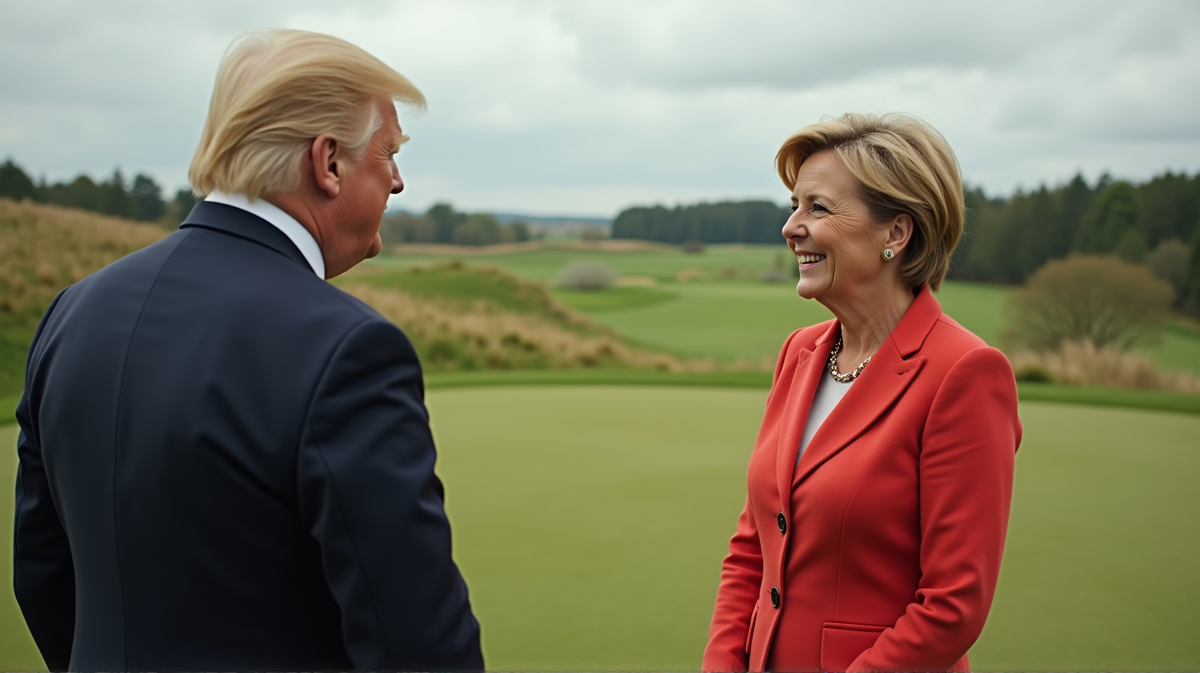High-Stakes Trade Negotiations: Trump Meets von der Leyen
Trump and von der Leyen's crucial meeting in Scotland aims to finalize a trade deal, potentially averting hefty tariffs and reshaping US-EU commerce.

As clouds gather over Europe’s trade landscape, the stage is set for a pivotal meeting between European Commission President Ursula von der Leyen and US President Donald Trump. The much-anticipated discussions, taking place at Trump’s scenic golf course in Turnberry, Scotland, aim to resolve lingering trade tensions that have cast a shadow over transatlantic commerce.
A Meeting with High Hopes
The meeting is slated for 1530 GMT Sunday, a moment the international business community eagerly anticipates. Trump’s aides, including US Trade Representative Jamieson Greer and Commerce Secretary Howard Lutnick, arrived with earnest intentions on Saturday, while von der Leyen’s counterpart, EU Trade Commissioner Maros Sefcovic, touched down on Sunday morning. The goal: to guide the two giants toward a trade deal that could redefine economic relations.
The 15% Baseline: A Compromise or a Concession?
Central to today’s negotiations is the proposed 15% baseline tariff on most EU goods, a number mirroring elements of recent US-Japan trade agreements. This tariff carries the promise of ending months of uncertainty for EU-based enterprises. According to Lutnick, the European Union needs to open its markets wider to US products, thereby persuading Trump to lower or abandon the looming 30% tariff — a figure both daunting and significant.
Strategic Choices and Economic Consequences
Behind closed doors, the EU’s ambassadors, remotely connected from Greenland, deliberated with von der Leyen, calibrating her negotiation margins. Both sides recognize the impossibility of coming out unscathed if the 30% tariffs take effect starting August 1. From Brussels’ perspective, reaching an accord adds layers of necessity. The EU has a counter-plan: counter-tariffs on €93 billion worth of US goods, a costly contingency you wouldn’t want to enact.
Beyond Tariffs: Potential Pathways to Partnership
Aside from tariffs, there are whispers of strategic moves on both sides. The EU could commit to augmenting its import of US liquefied natural gas, a gesture of goodwill and an economic boon for both continents. Cars, crucial to the EU’s economy, might benefit from reduced charges under this auspicious 15% baseline tariff — a vision some at the Summit harbor. Furthermore, there are murmurs of exemptions in areas like aerospace and spirits.
Optimism and Realism: Striking a Balance
A senior US official expressed a hint of hope, murmuring that a compromise hangs on the horizon, “…but it’s not over till it’s over.” This sentiment, while cautiously optimistic, hints at the complexities politicians face as they dance the delicate dance of diplomacy.
As stated in AAPNews Logo, the meeting between Trump and von der Leyen represents not just diplomatic posturing but a significant chapter for both sides. It’s a reflection of our interconnected world and the continuous renegotiation of old alliances, placing economic fortunes and entire industries on the negotiation table.
Through the lens of today’s meeting, we witness the profound intricacies and human connections at the heart of international relations. Let’s hope the discussions not only defuse current tensions but also lay fertile ground for stronger, more prosperous transatlantic ties.





